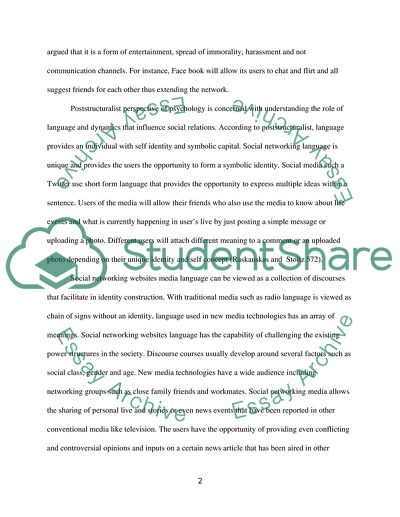Cite this document
(“The Language of Communication and the Perception of Social Media Research Paper”, n.d.)
The Language of Communication and the Perception of Social Media Research Paper. Retrieved from https://studentshare.org/technology/1791822-discuss-how-a-poststructuralist-media-psychology-might-extend-our-understanding-of-controversies-relating-to-media-effects-or-media-influence-for-example-in-relation-to-new-media-technologies-or-social-networking-websites
The Language of Communication and the Perception of Social Media Research Paper. Retrieved from https://studentshare.org/technology/1791822-discuss-how-a-poststructuralist-media-psychology-might-extend-our-understanding-of-controversies-relating-to-media-effects-or-media-influence-for-example-in-relation-to-new-media-technologies-or-social-networking-websites
(The Language of Communication and the Perception of Social Media Research Paper)
The Language of Communication and the Perception of Social Media Research Paper. https://studentshare.org/technology/1791822-discuss-how-a-poststructuralist-media-psychology-might-extend-our-understanding-of-controversies-relating-to-media-effects-or-media-influence-for-example-in-relation-to-new-media-technologies-or-social-networking-websites.
The Language of Communication and the Perception of Social Media Research Paper. https://studentshare.org/technology/1791822-discuss-how-a-poststructuralist-media-psychology-might-extend-our-understanding-of-controversies-relating-to-media-effects-or-media-influence-for-example-in-relation-to-new-media-technologies-or-social-networking-websites.
“The Language of Communication and the Perception of Social Media Research Paper”, n.d. https://studentshare.org/technology/1791822-discuss-how-a-poststructuralist-media-psychology-might-extend-our-understanding-of-controversies-relating-to-media-effects-or-media-influence-for-example-in-relation-to-new-media-technologies-or-social-networking-websites.


